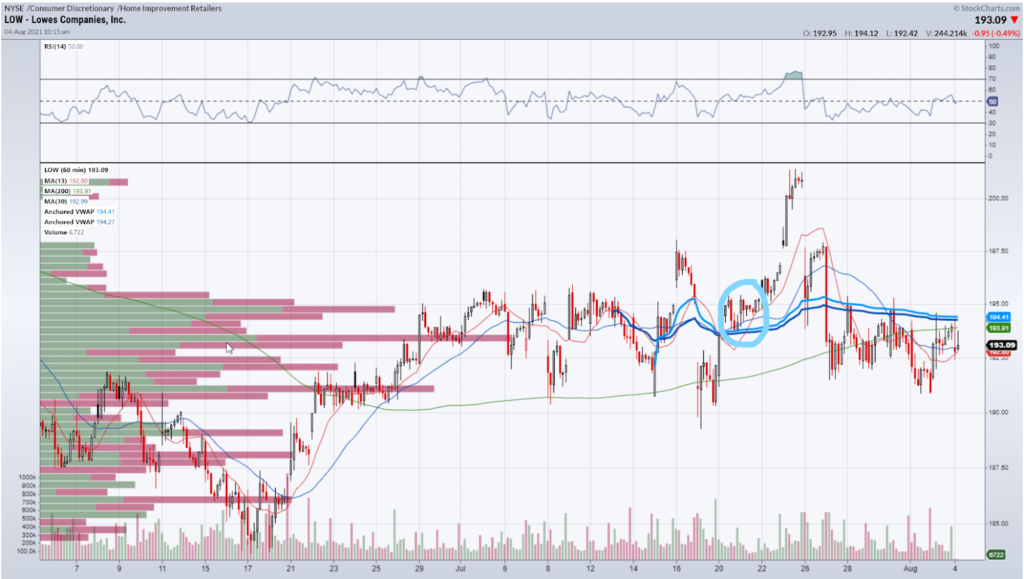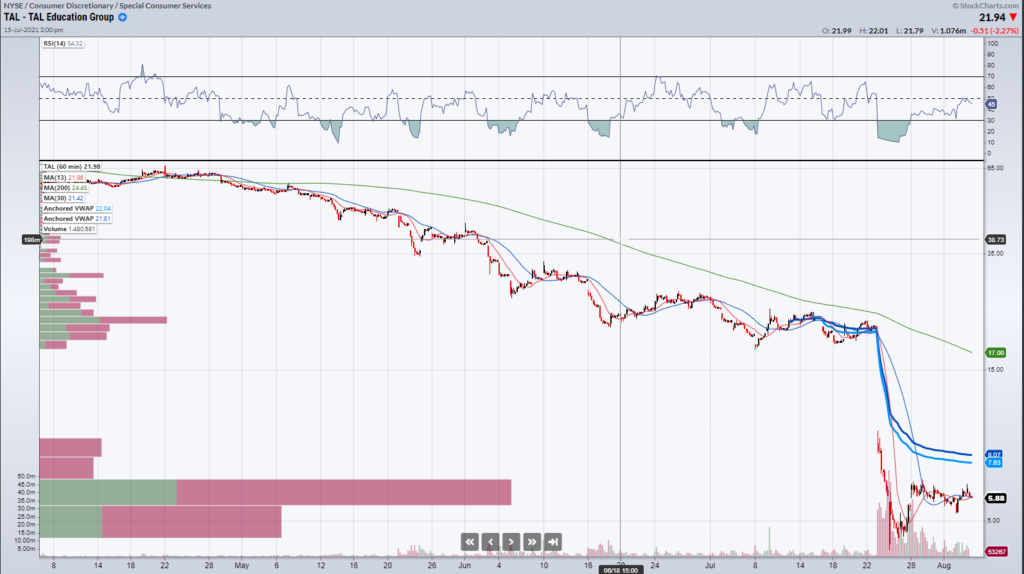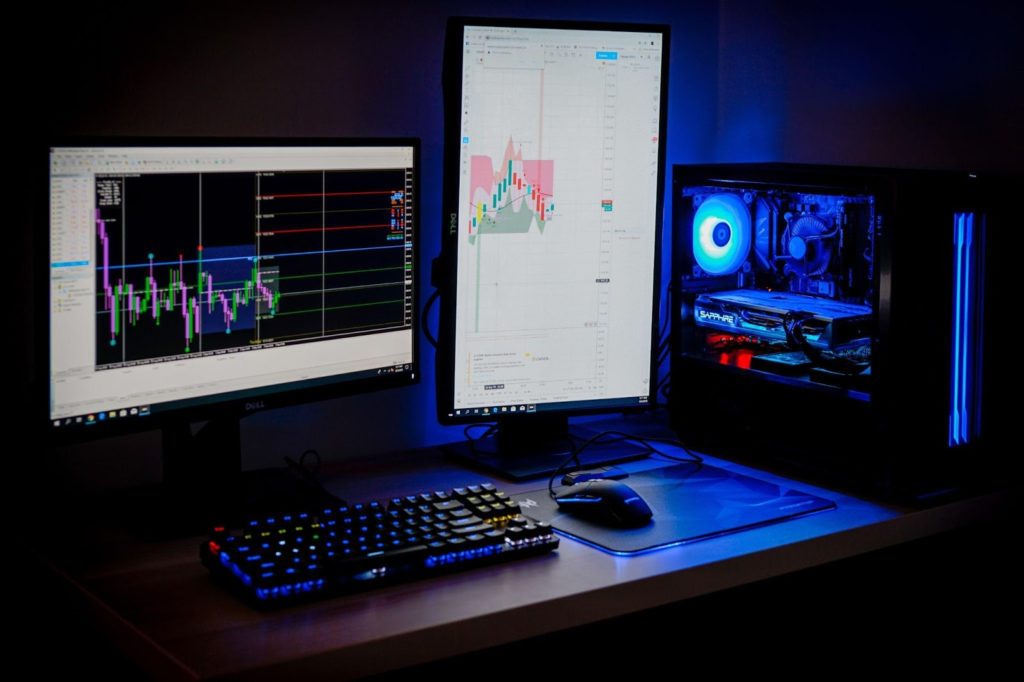Today I would like to discuss the importance of “seeing it” before putting on a trade. There are numerous ways to find good setups in the market. There are various strategies and trading setups that beginner traders should try out to find out if they work for them.
This is why the traders at Raging Bull each have their own unique style and method when it comes to approaching the markets. Traders are human, and this means they each have their own unique personality just like their trading setups.

Traders can find good setups a million different ways but can fail the same way; by not cutting losses and averaging into losers.
Today I will discuss my favorite trading setup and why, for the most part, I wait to see it before putting on a trade, despite how enticing a story stock or opportunity may look.
My Chart Indicators
I try to keep my trading charts clean and simple, only putting what I absolutely need to make trading decisions. I have the 13, 30, and 200-hour moving averages (MA’s), the 4 and 7 day anchored VWAP, classic volume at the bottom of the chart, as well as volume by price on the left hand side of the chart (referred to by some as volume profile). I also have a 14 period RSI on the top of my charts.
Now let us get to my favorite chart pattern, the flagpole consolidation. I want to get long strong stocks. Put simply, a trader’s job is to get long stocks that go up and short stocks that go down. The flagpole consolidation is a pattern I look for to buy stocks that I think are likely to go higher with great risk/reward.
Flagpole Consolidation in LOW
Here is a great example in Lowe’s Companies Inc. (LOW) from a couple of weeks ago.

The flagpole consolidation in LOW
The stock ran from a pivot low of $184, to a high of $195.50. Then in July, we broke out of the range to make a new high at $198.04 before failing and coming back to test the 200-hour MA at 191.40 and previous support at 190.
From a psychology perspective, this is how I interpret such action. ──LOW is a strong stock in a period of consolidation. There is a clear demand for stock at $190 and supply at $195. All the chasers who bought the breakout to $197.50 were trapped and got flushed out, leaving less future supply. The market loves to do the meanest thing possible, stop everybody out, then reverse back.
If the stock was to turn weak and go lower, it needed to fail below $190. It didn’t and found support yet again, building an even stronger shelf on the volume by price chart. Now here is where my setup comes in.
The bigger picture is we have a flagpole (strong run-up) and consolidation near a major support level ($190). I like to have as many checks in my favor as possible. So to enter a trade, I want to see the 200-hour, the 30-hour and 13-hour MA’s all pointing up with price holding above those levels. I also want to see price above the 4-day and 7-day anchored VWAP. That is exactly what we see when we enter the circled area above.
All this tells me is that buyers appear to be in control, and I am trading with the trend. I do not want to fight a stock that is going against me. I want to get long strong stocks. Waiting for this setup keeps me from trading against the trend.
Don’t Try to Catch a Falling Knife
To show why this is important, let’s have a look at a recent Chinese stock TAL Education Group (TAL):

TAL fell from $60 to $6 in a matter of weeks
There is an old trading adage, “do not try to catch a falling knife.” TAL is a prime example of why. I was waiting for an opportunity here for a trade because the stock looked oversold, but my setup just never appeared. Every time the stock looked like it might bounce, it just went lower and lower. As we can see, since May, the stock has sold off from $60 to $6. This is why, for the most part, I try to get long strong stocks, and wait for confirmation before taking a trade.
Now of course, there are exceptions to every rule. For example, the capitulation trade is discussed here (https://ragingbull.com/total-alpha/the-capitulation-trade/). However, my favorite setup is the flagpole consolidation and the one I look for most often.
Furthermore, although I wait for technicals to confirm, this is not the only thing I consider when taking a trade. I look at fundamentals, how hot a sector is, the story behind a stock, and market sentiment. All these factors are considered when I look for a stock to trade, but I wait for my signals to align before pulling the trigger!
Bottom Line
The primary job of a trader is to get long strong stocks and to get short weak stocks. No matter how much I like a story or a news PR that might come out on a particular day, or how undervalued I might think a stock is, I wait for confirmation from the chart. I do this because I understand that the market is always right and that price action is king. Thus when I see a stock I like for fundamental reasons, I stalk it like a hawk and wait for the trend to align. I look for the flagpole consolidation pattern. This is my favorite setup for strong stocks that have gone up and could continue their trend.







3 Comments
Jeff this is Joe romito I like all the way you track your stock. But I am not real king on everything you’re talking about I’m just learning and we have a are you still offering a cheap deal for a month of your option pics if so get back to me thank you very much God bless you all
Hi Jeff, I really enjoy your writing, clear, logical and concise and to the point. The key concept of why we long or short stocks without emotion involved, but via charts and deep analysis of a security. It sounds like you are a fantastic professor bedside an excellent trader, teaching the students (us like students here) in colleges. Thanks for spending time to educate us!
Thanks Jeff
Geat system